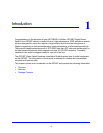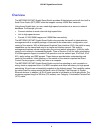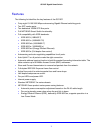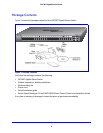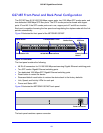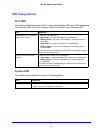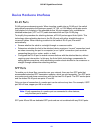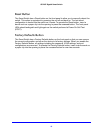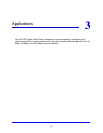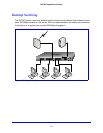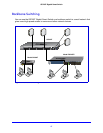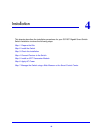
12
GS748T Gigabit Smart Switch
Device Hardware Interfaces
RJ-45 Ports
RJ-45 ports are autosensing ports. When inserting a cable into an RJ-45 port, the switch
automatically ascertains the maximum speed (10, 100, or 1000 Mbps) and duplex mode
(half-duplex or full-duplex) of the attached device. All ports support only unshielded or
shielded twisted-pair (UTP or STP) cable terminated with an 8-pin RJ-45 plug.
To simplify the procedure for attaching devices, all RJ-45 ports support Auto Uplink. This
technology allows attaching devices to the RJ-45 ports with either straight-through or
crossover cables. When inserting a cable into the switch’s RJ-45 port, the switch
automatically:
• Senses whether the cable is a straight-through or crossover cable.
• Determines whether the link to the attached device requires a “normal” connection (such
as when connecting the port to a computer) or an “uplink” connection (such as when
connecting the port to a router, switch, or hub).
• Configures the RJ-45 port to enable communications with the attached device, without
requiring user intervention. In this way, the Auto Uplink technology compensates for
setting uplink connections, while eliminating concern about whether to use crossover or
straight-through cables when attaching devices.
SFP Ports
To enable you to have fiber connections on your network, there are four SFP ports that
accommodate standard SFP transceiver modules, which are sold separately. Two SFP ports
are combo ports and share connections with the last two RJ-45 ports. The SFP combo ports
and the shared RJ-45 ports are ports 47 and 48.
Only one type of connection of a combo port can be active at any time. For example, if SFP
port 48 is in use, copper port 48 is not active.
Note: If both connectors of a combo port are connected to other devices,
only the fiber port is active.
SFP ports 49 and 50 are dedicated SFP ports and are not combined with any RJ-45 ports.




